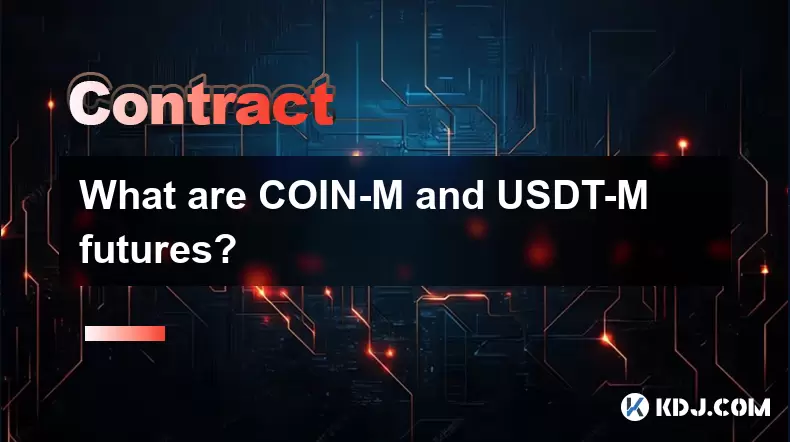-
 Bitcoin
Bitcoin $118,209.3536
1.16% -
 Ethereum
Ethereum $3,151.7546
5.98% -
 XRP
XRP $2.9277
2.35% -
 Tether USDt
Tether USDt $1.0000
0.00% -
 BNB
BNB $689.7099
1.26% -
 Solana
Solana $163.4270
1.91% -
 USDC
USDC $1.0000
0.02% -
 Dogecoin
Dogecoin $0.1983
3.74% -
 TRON
TRON $0.3008
0.51% -
 Cardano
Cardano $0.7435
2.86% -
 Hyperliquid
Hyperliquid $47.6547
-0.48% -
 Stellar
Stellar $0.4625
2.79% -
 Sui
Sui $3.9921
2.71% -
 Chainlink
Chainlink $16.0608
4.23% -
 Hedera
Hedera $0.2348
1.56% -
 Bitcoin Cash
Bitcoin Cash $496.6985
1.25% -
 Avalanche
Avalanche $21.9038
5.41% -
 UNUS SED LEO
UNUS SED LEO $8.8356
-1.88% -
 Shiba Inu
Shiba Inu $0.0...01364
5.31% -
 Toncoin
Toncoin $3.1102
4.35% -
 Litecoin
Litecoin $95.9756
3.59% -
 Polkadot
Polkadot $4.0925
5.78% -
 Monero
Monero $333.7622
-1.44% -
 Uniswap
Uniswap $9.1968
2.25% -
 Bitget Token
Bitget Token $4.6378
6.23% -
 Pepe
Pepe $0.0...01282
6.77% -
 Dai
Dai $1.0002
0.03% -
 Ethena USDe
Ethena USDe $1.0005
0.00% -
 Aave
Aave $329.9143
4.49% -
 Bittensor
Bittensor $441.4995
6.89%
What are COIN-M and USDT-M futures?
Cryptocurrency futures like COIN-M and USDT-M offer traders leveraged exposure to digital assets, with the former settling in crypto and the latter in stablecoins.
Jul 13, 2025 at 11:35 am

Understanding the Basics of Cryptocurrency Futures
Cryptocurrency futures are derivative contracts that allow traders to speculate on the future price of digital assets without owning the underlying asset. These financial instruments are widely used for hedging, arbitrage opportunities, and speculative trading. Two of the most common types of crypto futures available on major exchanges like Binance, Bybit, and OKX are COIN-M and USDT-M futures.
Futures contracts enable traders to lock in a specific price for a cryptocurrency at a predetermined time in the future. This provides flexibility and risk management tools for both institutional and retail investors in the volatile crypto market.
What is COIN-M Futures?
COIN-M futures, also known as Coin-Backed Margin Futures, are futures contracts where the margin and profit/loss (PnL) are settled in the native cryptocurrency itself. For example, when trading BTC/USD COIN-M perpetual futures, the trader must deposit Bitcoin (BTC) as collateral, and any gains or losses will also be realized in BTC.
This type of futures contract appeals to long-term holders who do not want to convert their holdings into stablecoins or fiat currencies. It allows them to maintain exposure to the underlying coin while engaging in leveraged trading.
Key Features of COIN-M Futures
- Margin Currency: The margin is paid in the base cryptocurrency (e.g., BTC, ETH).
- Settlement Currency: Profits and losses are also settled in the same cryptocurrency.
- No Stablecoin Exposure: Traders avoid converting crypto assets into USDT or USD, preserving their crypto holdings.
- Ideal for HODLers: Suitable for users who believe in holding onto their coins long-term but still want to trade with leverage.
One notable aspect of COIN-M futures is that they introduce additional volatility due to PnL being denominated in the same volatile asset used as margin. If the value of the asset drops significantly, liquidation risks increase even if the directional trade was correct.
What is USDT-M Futures?
USDT-M futures, or Tether-Backed Margin Futures, are contracts where the margin and PnL are settled in Tether (USDT), a popular stablecoin pegged to the US dollar. For instance, in BTC/USDT-M perpetual futures, the trader deposits USDT as collateral, and all profits or losses are calculated in USDT.
These futures are particularly favored by traders who want to minimize their exposure to crypto volatility beyond their directional bets. Since the margin is in a stablecoin, the overall risk from fluctuating margin value is reduced.
Key Features of USDT-M Futures
- Margin Currency: The margin is paid in USDT or another stablecoin like USDC.
- Settlement Currency: All profit and loss calculations are done in stablecoins.
- Lower Liquidation Risk: As the margin does not fluctuate in value, it reduces the chances of unexpected liquidations caused by margin depreciation.
- Simpler Risk Management: Traders can better calculate potential gains and losses without worrying about the margin’s changing value.
USDT-M contracts are often preferred by short-term traders and speculators who want predictable margin requirements and more straightforward position sizing. They offer greater control over capital allocation and risk exposure.
Comparing COIN-M and USDT-M Futures
While both futures types serve similar purposes—allowing traders to take leveraged positions—they differ significantly in terms of margin handling, risk exposure, and user preference.
- Margin Type: COIN-M uses the base cryptocurrency; USDT-M uses a stablecoin like USDT.
- Volatility Exposure: COIN-M exposes traders to additional volatility via margin depreciation; USDT-M eliminates this factor.
- Profit/Loss Denomination: COIN-M settles in the traded coin; USDT-M settles in stablecoin.
- Use Case: COIN-M suits long-term holders; USDT-M suits active traders and speculators.
Each type has its own advantages depending on the trader's strategy, market outlook, and risk tolerance level.
Selecting Between COIN-M and USDT-M Futures
Choosing between these two futures depends on several factors:
- Asset Holding Strategy: Do you prefer to hold your crypto or keep funds in stablecoins?
- Risk Appetite: Are you comfortable with margin value fluctuations or prefer a stable margin base?
- Trading Horizon: Is your strategy short-term speculative or long-term directional?
- Market Conditions: Are you trading during high volatility or relatively stable periods?
It's crucial to understand how each futures contract behaves under different market scenarios before committing real capital.
Frequently Asked Questions
Q1: Can I switch between COIN-M and USDT-M futures on the same platform?
Yes, most major exchanges like Binance, Bybit, and KuCoin offer both COIN-M and USDT-M futures for the same underlying asset. You can choose which contract to trade based on your margin preference and trading strategy.
Q2: How does funding rate work in COIN-M and USDT-M futures?
Funding rates apply to both types of perpetual futures contracts. The difference lies in the currency in which funding payments are made—COIN-M uses the base cryptocurrency, whereas USDT-M uses the stablecoin. Funding rates help align the price of the perpetual contract with the spot market.
Q3: Which futures type is more liquid?
Generally, USDT-M futures tend to have higher liquidity because they are more popular among short-term traders. However, COIN-M contracts also maintain decent liquidity, especially for major cryptocurrencies like BTC and ETH.
Q4: Does using COIN-M futures affect my tax reporting?
Yes, using COIN-M futures may complicate tax reporting since profits and losses are realized in cryptocurrency. Each transaction may trigger taxable events depending on your jurisdiction. Always consult a tax professional familiar with cryptocurrency regulations.
Disclaimer:info@kdj.com
The information provided is not trading advice. kdj.com does not assume any responsibility for any investments made based on the information provided in this article. Cryptocurrencies are highly volatile and it is highly recommended that you invest with caution after thorough research!
If you believe that the content used on this website infringes your copyright, please contact us immediately (info@kdj.com) and we will delete it promptly.
- XRP Price, Chart Patterns, and Upside Potential: Riding the $38 Wave?
- 2025-07-16 16:50:13
- Bitlayer's BitVM Bridge: A New Dawn for Bitcoin DeFi?
- 2025-07-16 16:50:13
- Bitcoin, Crypto, and Digital Assets: Wall Street's Gone Wild!
- 2025-07-16 16:30:12
- Pi Network: Reshaping Crypto with a Silent Tsunami
- 2025-07-16 17:30:12
- Ripple, SEC, and XRP Lawsuit: Is the End Finally Near?
- 2025-07-16 17:30:12
- XRP Ledger Revolutionizes Dubai Real Estate with Tokenization
- 2025-07-16 17:50:13
Related knowledge

What is a stablecoin-margined contract vs a coin-margined contract?
Jul 15,2025 at 06:36pm
Understanding the Difference Between Stablecoin-Margined Contracts and Coin-Margined ContractsIn the world of cryptocurrency derivatives, margin plays...

How to backtest a Bitcoin futures trading strategy?
Jul 15,2025 at 11:35am
Understanding Bitcoin Futures TradingBitcoin futures trading involves contracts to buy or sell Bitcoin at a predetermined price and date in the future...

Psychology of trading Bitcoin contracts
Jul 13,2025 at 02:50am
Understanding the Emotional Rollercoaster of Bitcoin Futures TradingBitcoin contract trading, especially in the form of futures, introduces a high lev...

Can the Lightning Network be used for smart contracts?
Jul 14,2025 at 11:28pm
Understanding the Lightning Network's Core FunctionalityThe Lightning Network is a second-layer solution built on top of blockchain protocols like Bit...

How does macroeconomic news affect Bitcoin futures prices?
Jul 15,2025 at 04:56pm
Understanding the Relationship Between Macroeconomic News and Bitcoin FuturesBitcoin futures are derivative contracts that allow traders to speculate ...

Best time of day to trade Bitcoin contracts?
Jul 13,2025 at 05:29am
Understanding Bitcoin Contracts and Their VolatilityBitcoin contracts, particularly futures contracts, are derivative instruments that allow traders t...

What is a stablecoin-margined contract vs a coin-margined contract?
Jul 15,2025 at 06:36pm
Understanding the Difference Between Stablecoin-Margined Contracts and Coin-Margined ContractsIn the world of cryptocurrency derivatives, margin plays...

How to backtest a Bitcoin futures trading strategy?
Jul 15,2025 at 11:35am
Understanding Bitcoin Futures TradingBitcoin futures trading involves contracts to buy or sell Bitcoin at a predetermined price and date in the future...

Psychology of trading Bitcoin contracts
Jul 13,2025 at 02:50am
Understanding the Emotional Rollercoaster of Bitcoin Futures TradingBitcoin contract trading, especially in the form of futures, introduces a high lev...

Can the Lightning Network be used for smart contracts?
Jul 14,2025 at 11:28pm
Understanding the Lightning Network's Core FunctionalityThe Lightning Network is a second-layer solution built on top of blockchain protocols like Bit...

How does macroeconomic news affect Bitcoin futures prices?
Jul 15,2025 at 04:56pm
Understanding the Relationship Between Macroeconomic News and Bitcoin FuturesBitcoin futures are derivative contracts that allow traders to speculate ...

Best time of day to trade Bitcoin contracts?
Jul 13,2025 at 05:29am
Understanding Bitcoin Contracts and Their VolatilityBitcoin contracts, particularly futures contracts, are derivative instruments that allow traders t...
See all articles

























































































